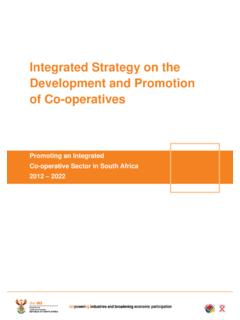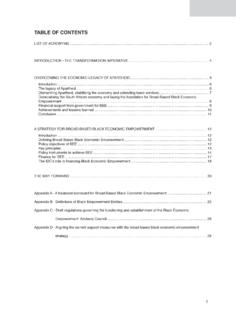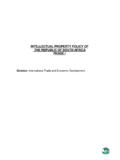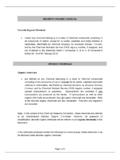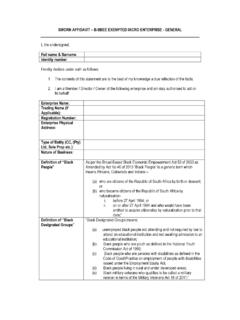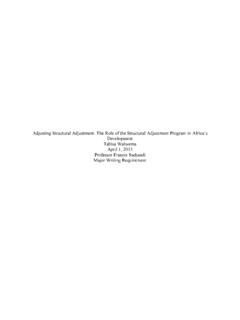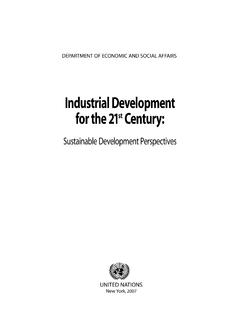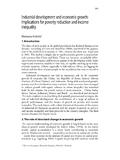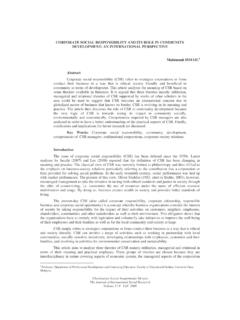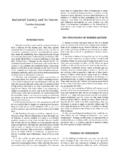Transcription of A NATIONAL INDUSTRIAL POLICY FRAMEWORK
1 A NATIONAL INDUSTRIAL POLICY FRAMEWORK DEPARTMENT OF TRADE AND INDUSTRY 1 of 54 2 of 54 NEW DIRECTIONS IN INDUSTRIAL POLICY : EXECUTIVE FOREWORD BY THE MINISTER OF TRADE AND INDUSTRY In the past few years it has become evident that South Africa s economy is capable of higher levels of economic performance. Consequently government aims principally through the Accelerated and Shared Growth Initiative of South Africa (ASGI-SA) to push purposefully towards its 2014 vision to achieve six percent gross domestic product (GDP) growth from 2010 onwards, and to reduce unemployment and poverty by half. In order to achieve this higher growth and development trajectory the South African economy needs to undergo some fundamental restructuring.
2 ASGI-SA explicitly recognises the central role of a strong and coherent INDUSTRIAL POLICY in driving this process. The growth spurt of the past few years has been underpinned by two key factors. The first is a household consumption drive facilitated by relatively low interest rates, low inflation, a broadening middle class resulting from employment equity, and the growth of social grants to the poor. The second has been the high global demand for commodities. In the medium to long term South Africa cannot rely so heavily on either consumption or commodities as the basis for our growth and development . Consumption growth is sustainable only when strongly underpinned by growing productive capacity, while commodity prices are inherently volatile, making the economy vulnerable to external shocks such as dutch disease.
3 Consequently, the major weakness identified in the South African economy is the relatively poor performance of non-traditional tradable goods and services that are generally the most low-skill intensive sectors and hence have a central role to play in addressing our unemployment problem. In order to contribute towards government s goals for 2014 and beyond the NATIONAL INDUSTRIAL POLICY FRAMEWORK (NIPF) vision for South Africa s industrialisation trajectory is: To facilitate diversification beyond our current reliance on traditional commodities and non-tradable services. This requires the promotion of increased value-addition per capita characterised particularly by movement into non-traditional tradable goods and services that compete in export markets as well as against imports.
4 The long-term intensification of South Africa s industrialisation process and movement towards a knowledge economy. The promotion of a more labour-absorbing industrialisation path with a particular emphasis on tradable labour-absorbing goods and services and economic linkages that catalyse employment creation. The promotion of a broader-based industrialisation path characterised by greater levels of participation of historically disadvantaged people and marginalised regions in the mainstream of the INDUSTRIAL economy. 3 of 54 Contributing to INDUSTRIAL development on the African continent with a strong emphasis on building its productive capabilities.
5 It is important to stress that the NIPF is a POLICY FRAMEWORK and not a blueprint for the INDUSTRIAL economy. Its core objective is to set out government s approach to South Africa s industrialisation trajectory and hence help align both private and public sector efforts towards this end. Although the NIPF aims to improve growth and employment conditions across much of the economy generally, its primary focus is on the relatively low-skill intensity industries: non-traditional tradable goods and services in the primary, manufacturing and services sectors of the economy. By tradable we mean both exportable and import competing goods and services. INDUSTRIAL POLICY is not the domain of a single government department but requires intensive coordination across a range of government departments.
6 It can only be implemented successfully if it is aligned with four associated and supporting sets of policies. First, a stable and supportive macroeconomic and regulatory environment. Second, appropriate skills development and education systems which are increasingly integrated with the needs of the INDUSTRIAL economy. Third, sufficient, reliable and competitively priced traditional and modern infrastructure. Fourth, adequate support for various forms of technological effort within the economy. The NIPF adopts and extends the same methodology as ASGI-SA. Rather than a one-size-fits-all approach to industrialization it focuses on identifying and addressing the cross-cutting and sector-specific constraints and opportunities prevailing in the INDUSTRIAL economy through thirteen strategic programmes.
7 These are: SP1: Sector Strategies SP2: INDUSTRIAL Financing SP3: Trade POLICY SP4: Skills and Education for Industrialisation SP5: Competition POLICY and Regulation SP6: Leveraging Public Expenditure SP7: INDUSTRIAL Upgrading SP8: Innovation and Technology SP9: Spatial and INDUSTRIAL Infrastructure SP10: Finance and Services to Small Enterprises SP11: Leveraging Empowerment for Growth and Employment SP12: Regional and African INDUSTRIAL and Trade FRAMEWORK SP13: Coordination, Capacity and Organisation 4 of 54 The quality of the design and implementation of our sector strategies will play a decisive role in realising the vision of the NIPF and indeed ASGI-SA s objectives.
8 This requires a much more focused use of government s limited human and financial resources. South Africa has a relatively diversified and complex INDUSTRIAL base that needs ongoing consolidation and renewal. Therefore we will always have to engage across substantial parts of manufacturing, services and primary sectors of the economy. In this regard, the NIPF does not seek to explicitly identify what these sectors should be although it does highlight five sector groupings where our analysis tells us much of our opportunities lie: natural-resource based, medium technology, advanced manufacturing and certain labour-intensive and tradable services sectors. However from time-to-time government will single out sectors for particular focus where substantial potential exists for growth, employment generation and the diversification and growth of exports.
9 We therefore focus rather on key principles and processes through which such sector strategies will be developed and prioritised. They will be developed and strengthened through improved processes of self-discovery . This involves enhancing both the underlying sector research as well as the quality of interactions with business, labour and other stakeholders. These processes will lead to Key Action Plans (KAPs) for the relevant sector that contain measurable key performance indicators. High quality priority KAPs that emerge from sector strategies and cross-cutting programmes will receive appropriate and sufficient support. This will take two main forms: regulatory changes and INDUSTRIAL financing.
10 The latter in particular cannot be assumed and the support mechanisms for each KAP will be determined fundamentally by the underlying economic constraints and opportunities that inform it. INDUSTRIAL financing will be based on certain core principles. It should be focused on new as opposed to existing activities and wherever possible have spill over and demonstration effects. It must operate for a specified period of time and be dependant on the achievement of measurable benchmarks by firms. This implies much stronger systems for the design, management, monitoring and evaluation of INDUSTRIAL financing. Trade POLICY remains an instrument of INDUSTRIAL POLICY in a context of narrowing options under multi-lateral and bi-lateral trade arrangements.

